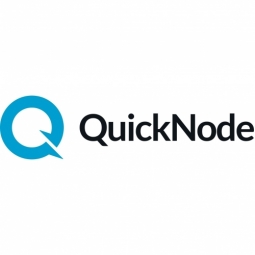Case Studies.
Add Case Study
Our Case Study database tracks 18,927 case studies in the global enterprise technology ecosystem.
Filters allow you to explore case studies quickly and efficiently.
Download Excel
Filters
-
(5)
- (5)
-
(2)
- (2)
-
(1)
- (1)
- (4)
- (3)
- (2)
- (1)
- (3)
- (2)
- (1)
- (1)
- (1)
- View all 5 Use Cases
- (6)
- (1)
- (1)
- (7)
Selected Filters

|
QuickNode’s Limitless Calls Per Second Powers Cargo’s NFT Drops on xDai and Matic / Polygon
Cargo, an NFT creation, management, and monetization tool, was facing a significant challenge with its batch minting approach. This approach, which uses the newer ERC-2309 standard, allows creators, developers, and businesses to create an unlimited number of NFTs in one transaction at a similar price-point to creating just one NFT on other platforms. However, batch minting requires a lot of bandwidth. Initially, Cargo connected to the blockchain via another node provider. However, Layer 2 solutions are new chain types and not every provider has the ability to quickly increase capacity. Consequently, Cargo hit rate limits using that service, which slowed requests and at times resulted in not being able to access the Matic / Polygon blockchain. Furthermore, node outages dramatically impacted the platform and its users. If users were in the process of minting NFTs and Cargo suffered a node outage, those NFTs might not show up for users, or might show up blank. This led to increases in support tickets, and decreases in overall customer sentiment.
|
|

|
Dune Analytics: Leveraging IoT to Enhance Ethereum Data Analysis
Before the inception of Dune Analytics in 2018, there was a significant challenge in the Ethereum community regarding the analysis of Ethereum activity data. There were limited resources to answer arbitrary questions about Ethereum activity with data or to track how that data evolved over time. A few sites reported specific metrics, but they lacked transparency and flexibility to interact with the metrics and data provided. This lack of comprehensive and interactive data made it difficult to benchmark metrics across different dApps in a meaningful way. Consequently, community discussions and product decisions were often based on inconsistent comparisons or made without considering data at all.
|
|

|
Icy.tools Enhances User Experience and Reduces Anxiety with QuickNode
Icy.tools, an NFT Analytics Platform, was facing significant challenges in scaling requests and dealing with rate limits on competing platforms. The company's mission is to make visibility and analysis of transactions in the NFT space more digestible, focusing on indexing blockchain data on ERC721 transfers and OpenSea orders. They collect as much data as possible directly from the blockchain, reducing the risk of relying on third-party services or APIs that can revoke access. However, the volume of requests was causing issues, and they were running into rate limits not just with public endpoints, but also with other node service providers. The co-founders, with over 15 years of experience in building and growing products at early-stage startups, were looking for a solution that could provide more insights and discoverability to the NFT projects for better tracking.
|
|

|
Oikos on QuickNode: Enhancing Transaction Speed and User Experience in DeFi
Oikos, a DeFi application using Binance Smart Chain, aimed to bring the benefits of DeFi to Latin America and the world. The platform allows users to trade without liquidity limitations through Oikos-powered smart contracts. However, Oikos faced significant challenges when they migrated their platform from a different chain to Binance Smart Chain. They were using a self-hosting solution to connect to Binance Smart Chain, which led to data falling out of sync, nodes going down, and inconsistent information across different nodes. This negatively impacted the user experience, with trades taking up to 6 hours and in some cases, resulting in lost customers. To be successful, Oikos realized they needed a reliable connection to Binance Smart chain and a node service that could keep up.
|
|

|
Fairdesk Optimizes Operations and Reduces Costs with QuickNode
Fairdesk, a derivatives exchange, was striving to build the fastest, most secure product in the market. They had the support of several chains including BTC, Ethererun, BSC, LTC, Doge, and Tron. However, maintaining the BSC infrastructure proved to be a significant challenge. The full node was filling disk space at tens of Gigabytes per day, leading to heavy disk reads and writes. This situation required constant engineering cycles, which were being spent daily on maintaining the BSC infrastructure. This not only diverted resources from core product development but also led to high operational costs, with spending reaching $2000 at AWS.
|
|

|
UniCrypt: Enhancing Blockchain Back-end Polling Speed & Reducing Cost by 100X
UniCrypt, a platform offering a browser for all ERC20 tokens and pairs on UniSwap, faced a significant challenge in accessing the Ethereum blockchain. The nature of their operations demanded not just any level of access, but the fastest nodes on the planet, coupled with unlimited queries for optimal functioning. Any glitch or hiccup in the system could potentially disrupt their services, leading to customer dissatisfaction and potential loss of business. The challenge was to find a solution that could provide this high level of access and speed, without incurring prohibitive costs.
|
|

|
Implementing Serverless Architecture for Avastars NFT App
The Avastars team was faced with a significant challenge. They were operating under a serverless architecture and needed a way to receive notifications when certain events were triggered on their smart contracts. The team was under pressure due to limited time and resources. They did not want to set up machines to handle long-running processes, which would have been a time-consuming and resource-intensive task. Additionally, they required their information to be encoded in a specific format and delivered promptly as soon as it was available. The challenge was to find a solution that could meet these specific needs without disrupting their existing serverless architecture.
|
|

